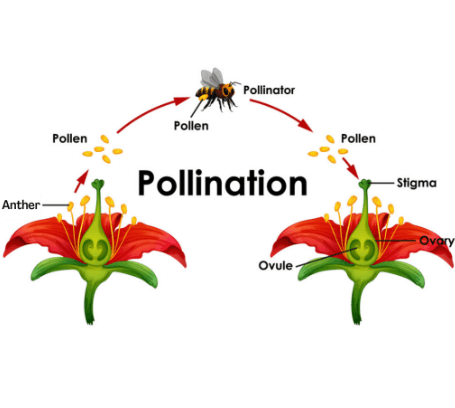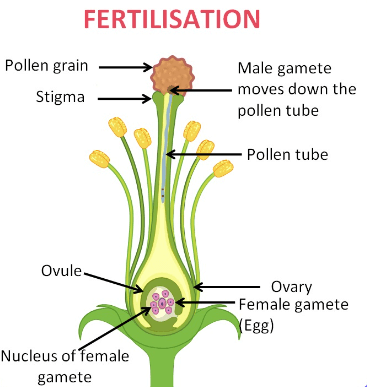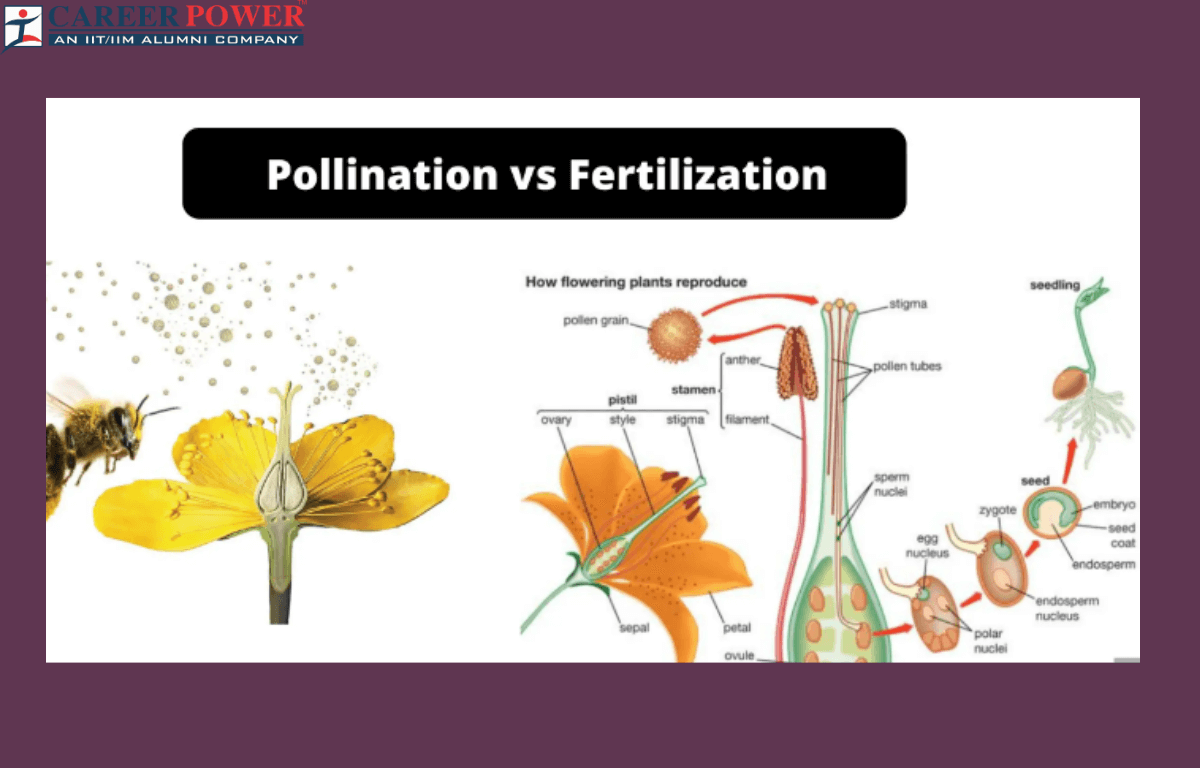Pollination and Fertilization are both crucial processes in the reproduction of plants. One key similarity is that they both contribute to the development of seeds. During pollination, pollen grains are transferred from the male reproductive organ (anther) to the female reproductive organ (stigma). Fertilization, on the other hand, occurs when a pollen tube delivers sperm cells to the ovule, resulting in the fusion of male and female gametes.
Pollination and Fertilization
Pollination is the transfer of pollen from the male reproductive organ (anther) to the female reproductive organ (stigma) of a flower. Fertilization, on the other hand, is the fusion of the male gamete (sperm) with the female gamete (egg) to form a zygote, which develops into a seed. In summary, pollination is the transfer of pollen, while fertilization is the union of male and female gametes.
What is Pollination?
Pollination is a crucial natural process that enables the Reproduction of flowering plants. It involves the transfer of pollen, containing male reproductive cells, from the male part (anther) of a flower to the female part (stigma) of the same or another flower. This transfer can occur through various means, including wind, water, insects, birds, or other animals. When a pollinator, such as a bee, visits a flower for nectar, it unintentionally collects pollen on its body.

As the pollinator moves to another flower, some of this pollen is deposited onto the stigma, initiating fertilization. Fertilization leads to the formation of seeds, ensuring the plant’s next generation. This process not only sustains plant populations but also plays a vital role in supporting ecosystems and agriculture by facilitating the production of fruits, vegetables, and other crops essential for human and animal consumption.
What is fertilization?
Fertilization is a remarkable event in nature that occurs when male and female reproductive cells unite to form a new organism. In the context of plants, it involves the fusion of pollen (containing male gametes) with the ovule (containing female gametes) within a flower. This union results in the formation of a seed, which later develops into a new plant. In animals, fertilization typically occurs internally, with the fusion of sperm (male gamete) and egg (female gamete). This process can take place within the female’s body, such as in mammals, or externally, as seen in some fish and amphibians.

Essentially, fertilization combines genetic material from both parents, ensuring genetic diversity in the offspring. This diversity is crucial for the adaptation and evolution of species. Fertilization is a fundamental step in the adaptation and evolution of species. Fertilization is a fundamental step in the life cycle of organisms, making the beginning of new life and the continuation of a species.
Difference Between Pollination and Fertilization
Here we have discussed a few points that will highlight the difference between pollination and fertilization based on different aspects such as their location, timing, goals, results, process, and many more.
| Difference Between Pollination and Fertilization | ||
| Aspects | Pollination | Fertilization |
| Definition | Pollination is the transfer of pollen from the male reproductive organ to the female reproductive organ of a flower. | Fertilization is the fusion of the male gamete (sperm) with the female gamete (egg) to form a zygote. |
| Process | Pollination is a physical transfer of pollen, often facilitated by wind, insects, or other pollinators. | Fertilization involves the actual union of male and female gametes, leading to the formation of a zygote. |
| Location | Pollination occurs on the external parts of the flower, such as the stigma, anther, and petals. | Fertilization takes place within the ovule, which is usually located within the ovary of the flower. |
| Timing | Pollination precedes fertilization in the plant reproductive process. | Fertilization follows successful pollination. |
| Goal | The goal of pollination is to transfer pollen for potential fertilization. | The goal of fertilization is the formation of a zygote and subsequent seed development. |
| Involvement of Gametes | Pollination involves pollen grains, which contain male gametes (sperm cells). | Fertilization involves the fusion of the male gamete (sperm) with the female gamete (egg). |
| External vs. Internal | Pollination is an external process that occurs on the surface of the flower. | Fertilization is an internal process that takes place within the tissues of the ovule. |
| Result | Successful pollination may or may not lead to fertilization, depending on the presence of compatible gametes. | Fertilization results in the formation of a zygote, which develops into a seed. |
| Dependency on Agents | Pollination often depends on external agents like wind, insects, birds, or animals. | Fertilization is a biological process that occurs internally, and its success depends on the compatibility of gametes. |
| Outcome | Pollination is a precursor to fertilization, contributing to the possibility of seed and fruit development. | Fertilization is the key event that initiates the development of a new plant individual from a seed. |
Similarities Between Pollination and Fertilization
Both fertilization and pollination involve the transfer of genetic material, leading to the formation of seeds and ensuring the continuation of plant species. Here are the similarities between pollination and fertilization in bullet points. These shared aspects highlight the interconnected nature of pollination and fertilization in the life cycle of plants.
- Transfer of Genetic Material: Both processes involve the transfer of genetic material from the male reproductive organs to the female reproductive organs in plants.
- Contribution to Seed Formation: Pollination and Fertilization play essential roles in the formation of seeds, ensuring the propagation and continuation of plant species.
- Male and Female Reproductive Structures: Both processes require the interaction between male reproductive structures (pollen, anther) and female reproductive structures (stigma, ovule) for successful reproduction.
- Interaction in Plant Reproductive Cycle: Pollination sets the stage for fertilization by facilitating the transfer of pollen, which contains male gametes. Fertilization is the subsequent fusion of male and female gametes, leading to seed development.



 50 Vegetables Name for Kids in English a...
50 Vegetables Name for Kids in English a...
 Food Chain: Definition, Types, Examples,...
Food Chain: Definition, Types, Examples,...
 Human Respiratory System: Definition, Di...
Human Respiratory System: Definition, Di...













